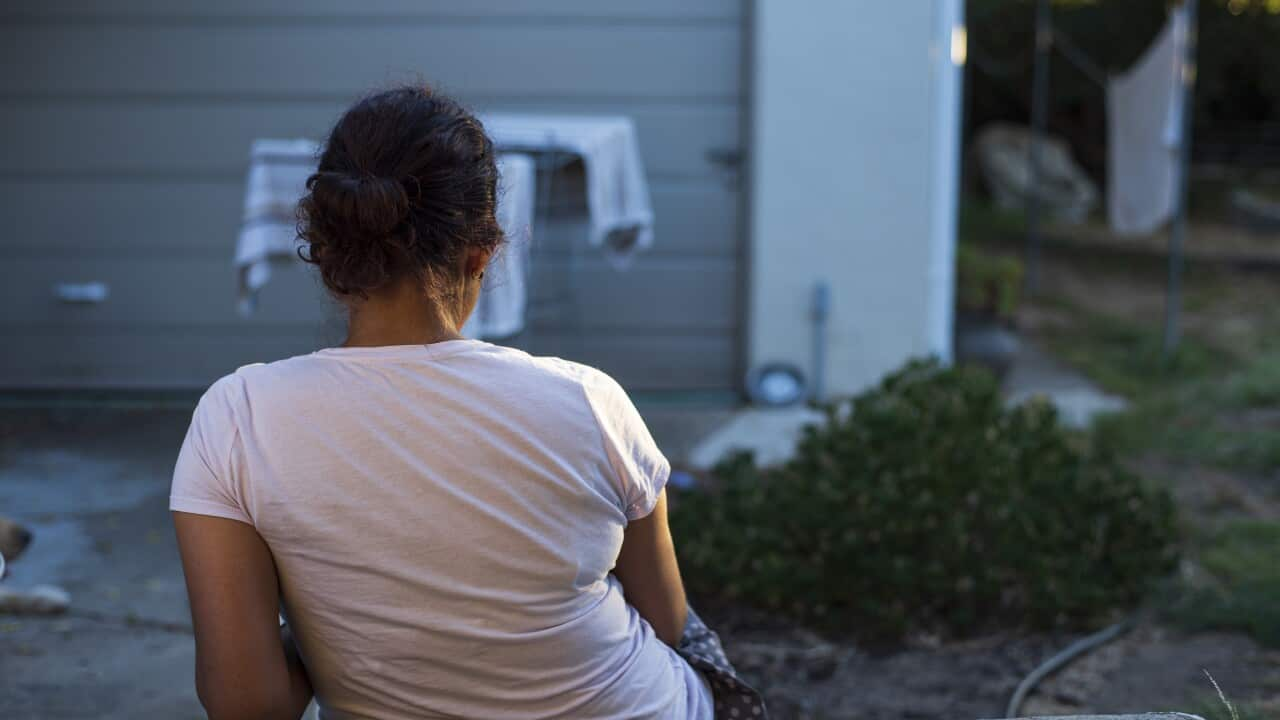Mara told The Feed she’d had a strained relationship with her parents since she was young, due to differing views on traditional gender roles. But one day, she’d had enough of the abuse.
Mara is among many young people who flee their homes due to family violence. About 72 per cent of young homeless Australians have experienced domestic or sexual violence, according to the Australian Institute of Health and Welfare specialist homelessness services annual report.
Since the night she left home, Mara was in and out of homelessness — couch surfing or sheltering in temporary crisis accommodation. She now has a court protection order against her mother.
Young homeless Australians going uncounted
“The hidden issue is that [data counts the] numbers of people who are taking beds at refuges — but what about the young people who are transient because they don’t have anywhere to go?”

Statistics reveal the high rate of young people who have experienced family violence. Source: SBS
When Mission Australia recently surveyed almost 20,000 young people it found one in 10 had experienced homelessness in the past 12 months.
“It’s a tragedy, it’s a crisis.”

Many young people are not being recognised as homeless as they are not engaging with support services — instead relying on couch surfing. Source: SBS / Caroline Huang
Mara is now 20 and, with the help of various specialist homelessness services, lives in transitional housing — but her life was headed in a very different direction.
She started hanging around with the wrong crowd and stealing marijuana, but soon realised she was entering the criminal world.
“It was really hard to get to school, or to even do my assignments. I couldn’t get internet. I had to focus on keeping a roof over my head,” she said.
Surviving a violent home
Barraclough said youth homelessness often creates a chain effect. Missing school leads to employment, social and mental health challenges down the line.

The 2021 census revealed that nearly a quarter of all people experiencing homelessness were aged from 12 to 24 years (28,204 people). Source: SBS
“They don’t have income … they’re getting isolated from school because they can’t get themselves there, and they’re expected to fend for themselves like an adult would… it’s pure survival for a lot of them.”
“One in two young people are being turned away from crisis accommodation if they need it. There are very limited resources available specifically for young people.”
Should we screen students for family violence like we do cancer?
David MacKenzie is an associate professor at UNSW who has conducted extensive research into youth homelessness, and says early prevention is vital.

Mission Australia recently surveyed almost 20,000 young people and found almost one in 10 had experienced homelessness in the past 12 months. Source: AAP / Dave Hunt
Part of that is identifying family abuse before a child is forced to flee, potentially through student surveys.
“We screen for diseases, we screen for cervical cancer, we have screening processes for health problems. Well, we are using a screening process to try and identify young people at risk of homelessness.”
Australia’s ‘forever problem’
He said most young homeless people are sleeping on couches rather than on the streets.

Young children experienced the highest increase in homelessness since the last census. Source: SBS
Youth homelessness is not just confined to the big cities. Coffs Harbour’s Wesley Youth Accommodation Services program manager Meena Johnson estimates that eight in 10 of its clients are escaping domestic or family violence.
If you or someone you know is experiencing, or at risk of experiencing, domestic, family or sexual violence, call 1800RESPECT on 1800 737 732 or visit 1800RESPECT.org.au.
